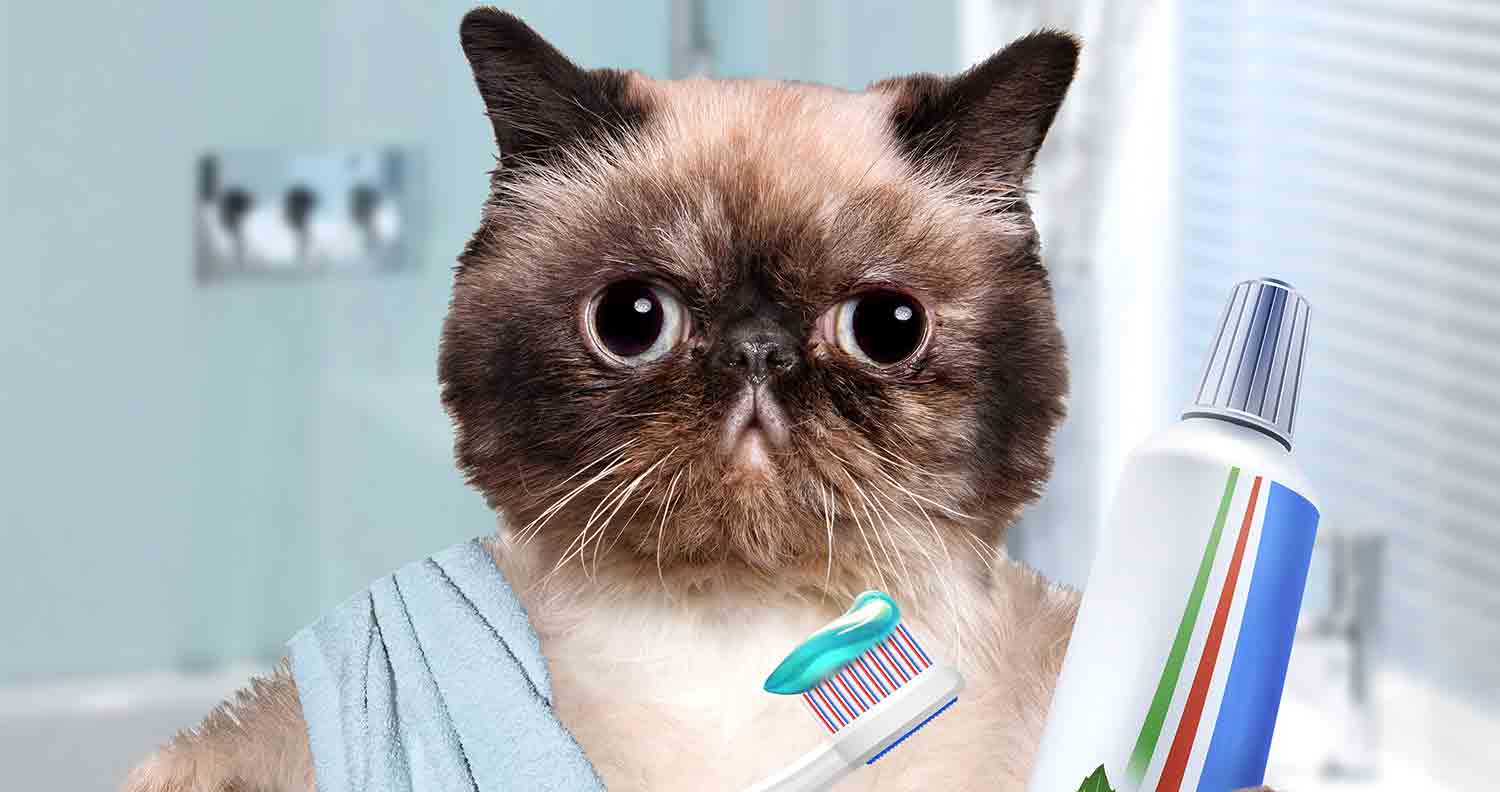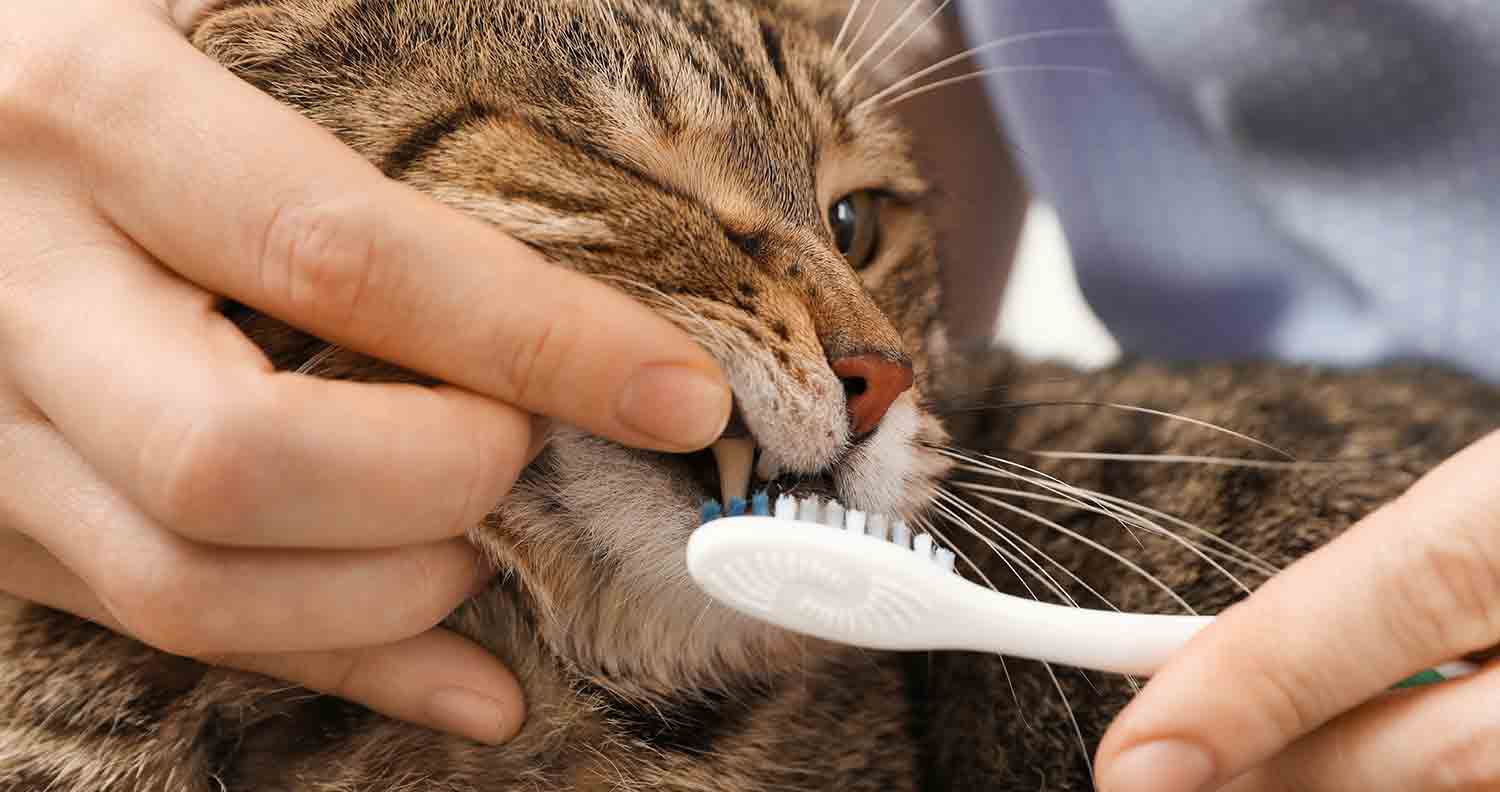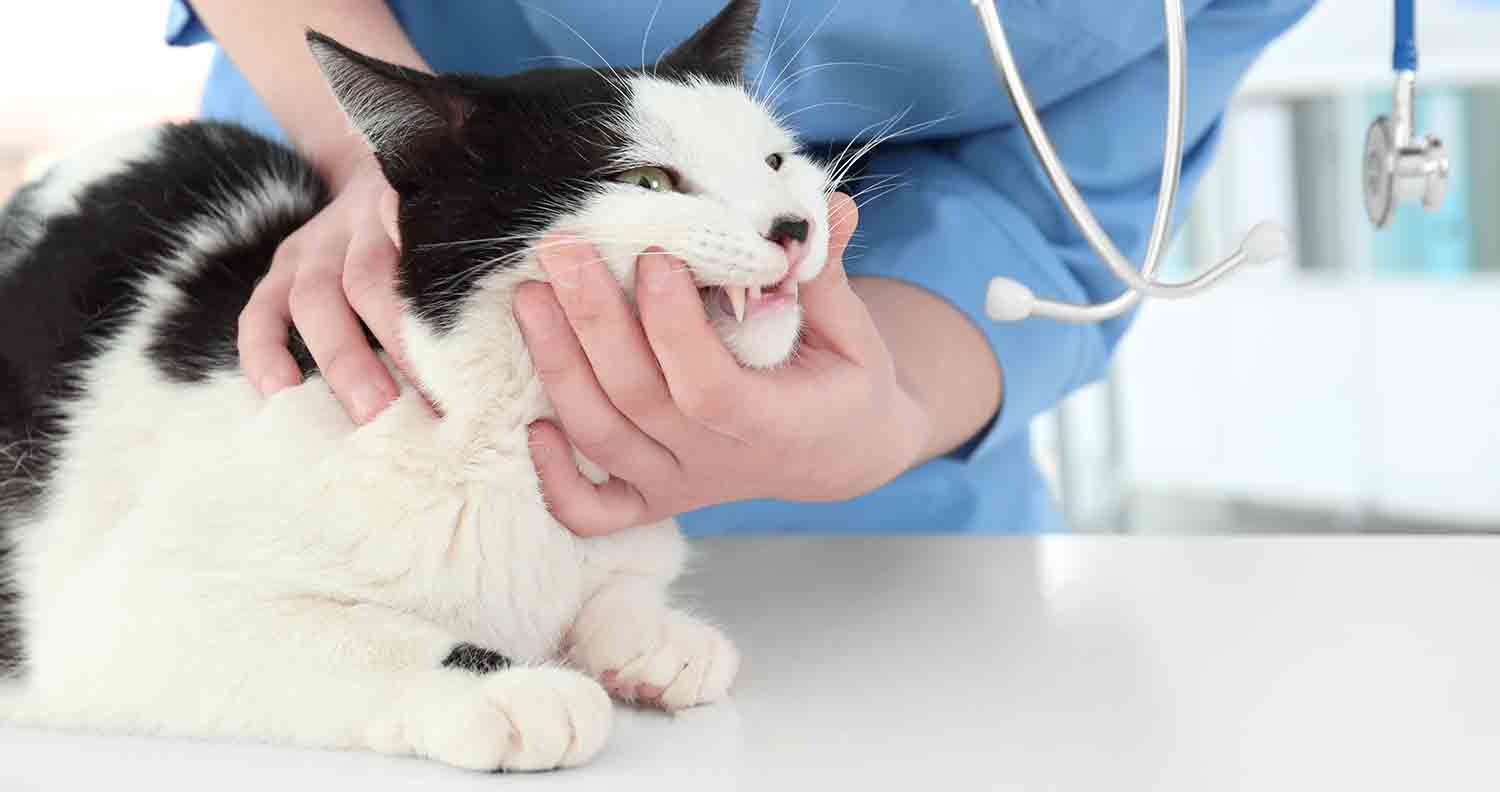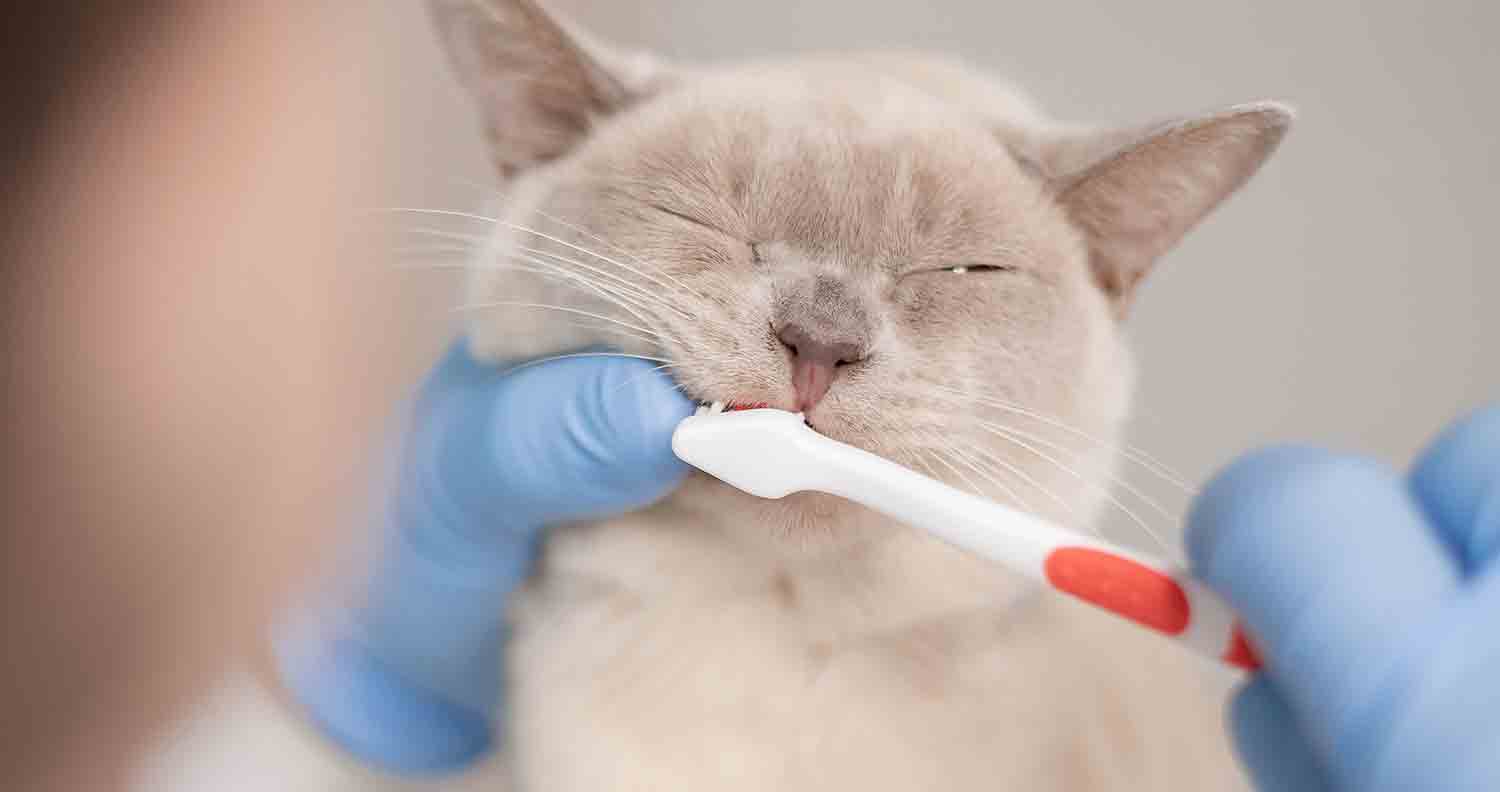Full Guide to Common Cat Dental Problems
Share:

Has your cat been drooling excessively recently? Is this accompanied by bad breath and decreased appetite? Your furry feline could be in pain caused by cat dental issues. It is difficult to discern if your kitty has cat dental problems because cats like to keep their pain to themselves.
But if you are active and vigilant, you can spot a few clues and signs of cat dental problems plaguing your fur baby. Recent studies have pointed out that 90% of older cats have some form of periodontal disease. Fortunately, the majority of these dental problems can be prevented through proper cat dental care routine.
In this article, we’ll be discussing cat dental problems, their causes, symptoms and signs, and how to prevent them in detail. Let’s begin with some of the most common dental complexities in cats.
What is Feline Periodontal Disease?
Around 70% of cats are affected by a serious health problem by the time they reach three years of age. It is also one the most common cat dental problems and health challenges older cats face. We are talking about Feline Periodontal Disease caused by bacterial infection of the dental plaque.
Your kitty tries hard to keep its teeth clean but unfortunately it’s a hit and miss case. Unless they can hold a brush and a toothpaste in their furry paws, cats easily get plaque build up on the surface of their teeth.
When this plaque build up comes in contact with saliva, it hardens into tartar, which gets firmly attached to your cat’s teeth. If you look closely at your cat’s teeth, you can easily spot tartar build up. When tartar starts digging into and under your cat’s gums, cat dental problems start occurring.
Bacteria get trapped between the gums and the tartar, which starts an ever exhausting cycle of dental infections damaging your cats teeth, gums, and tissues surrounding them. Before we continue discussing cat dental problems, let’s get you acquainted with some of the common terminologies.
Plaque in Cats
A soft film of food and bacteria accumulates every day on your cat’s teeth. This soft film is plaque and requires daily brushing to be removed. In the absence of mechanical brushing, plaque keeps building up on the surface of your kitty’s teeth causing a cat dental problem
Tartar in Cats
Cat saliva has minerals that harden plaque into dental calculus upon coming in contact with it. This dental calculus is tartar, which snuggles your kitty’s teeth pretty tight. This is why you need to get rid of plaque regularly- to prevent it from turning into tartar. Limiting tartar limits cat dental problems!
Gingivitis in Cats
Tartar is firmly attached to teeth and sometimes starts digging into and under the gums. This causes your kitty’s gum tissues to become red, inflamed, and irritated causing gingivitis. Once tartar results in gingivitis, there’s no returning to healthy gum state without the intervention of a cat dental expert.
Plaque bacteria enter your cat’s gum line causing varying degrees of gum infection. Gingivitis can be classing into three types depending upon its severity.
Mild Gingivitis
Just as the name suggests, mild gingivitis isn’t adverse. It is a very common cat dental problem in cats of all ages and can occur in just two days of cleaning your kitty’s teeth. It’s when plaque formation just started. The good aspect of mild gingivitis is that it doesn’t affect your cat’s tooth root. Simple homecare can help reverse easily.
Moderate Gingivitis
Mild gingivitis can progress into moderate if not paid attention on time. Plaque would keep accumulating on your kitty’s teeth further inflaming the gingiva. While examining your kitty’s teeth closely, you might notice some gum recession.
There might also be gingival pockets- spots where gum starts to separate from the tooth. Such sites are vulnerable to the accumulation of tartar, plaque, food, and bacteria build up. Not necessarily all, but some moderate cases of gingivitis can be reversed with the right care and treatment.
Gingivitis pockets are very difficult to reverse. So stay vigilant with this particular cat dental problem and keep checking your furry feline’s teeth from time to time.
Severe Gingivitis
This is the most painful form of gingivitis and usually an irreversible cat dental problem. Your cat will exhibit very visible signs of severe gingivitis like hypersalivation, reduced appetite, reluctance to eat food, pawing at the mouth, and halitosis.
You might also notice bleeding from your cat’s mouth. Consistent plaque and tartar deposition on the teeth leads to severe gingivitis with time. Gingival pockets are easily visible, more prominent, and deeper than moderate gingivitis.
Generally, severe gingivitis cannot be reversed with brushing. In fact, your kitty would be in so much pain that brushing would be all the more difficult. A vet will put your kitty under general anesthetic to scale and polish its teeth to treat this cat dental problem.
In certain severe cases, the vet might even have to extract the affected tooth. After the treatment is over, make sure to brush your cat’s teeth regularly to prevent recurrence of severe gingivitis.

Periodontitis
We just learned how plaque build-up results into tartar over time. This tartar digs into gums, thereby introducing plaque bacteria into the gum line. Here, plaque bacteria secrete toxic substances, which damages your cat’s gum tissues over time and creates the cat dental condition. Plaque bacteria, inflammation of your kitty’s gum tissues, and damage caused to them- all can trigger their immune system.
The result isn’t pretty as the immune system brings in white blood cells to fight off the infection. But unfortunately, even healthy gum tissues get affected in the process. This cat dental problems is known as Periodontitis.
Periodontal disease can cause organ damage if the harmful plaque bacteria gain access to the bloodstream. This condition is called bacteremia.
Cat tooth root abscess
This is a particularly nasty cat dental problem. Bacteria can easily get access to the roots of your cat’s teeth when there’s active gingivitis and periodontitis. Gingivitis digs into gums, while periodontitis causes damage to the healthy, soft, and bony tissues of the tooth. Together these two open up the highway for bacteria to reach the roots of your kitty’s teeth.
These harmful bacteria destroy the root slowly. They sever its attachment to the jaws by cutting off the vital blood supply. Lack of blood supply causes death of the tissues at the site. In response, your cat’s immune system signals white blood cells to flood the area and fight off the invaders.
All of this ultimately leads to accumulation of white blood cells called abscess or pus. The bad news is once deep bone infection called osteomyelitis sets in, it can be pretty difficult to get rid of it. Your furry feline most probably will need surgical intervention by the vet to get better.
Premolar teeth of cats are often affected by tooth root abscess. It can be difficult for you to spot it in its nascent stage. It ultimately leads to soft swelling directly under the eye, which is when tooth root abscess gets detected. The only way to prevent all this cat dental problem happening is to maintain a good oral care routine for your kitty.
Loss of cat teeth
Periodontal disease ultimately results in teeth fall out due to the loss of deep attachments at the base of the teeth. Either the affected teeth fall out on their own or would need to be removed by the vet because they are loose.
Loose teeth aren’t just uncomfortable. They cause pain and interfere with your kitty’s ability to eat their food peacefully.
What is Tooth Resorption?
30 to 70% of cats show signs of gradual destruction of a tooth (or teeth). The breakdown of tooth structure takes place through a process beginning inside the tooth. With time, it slowly progresses to other parts of the tooth. This cat dental problem is called tooth resorption.
When the destruction reaches the center of the tooth, it exposes nerve endings. This causes significant pain to your furry feline. The appearance of the tooth changes as well. It looks as if either there’s a hole in the tooth or the gun is growing over it. Not a pretty sight actually. But it is a painful cat dental problem, so avoid at all costs.
The exact cause of tooth resorption as a cat dental problem is not known yet. Your best bet is to ensure proper cat dental hygiene for your kitty. The only treatment possible for tooth resorption is to remove it. But that’s a challenge in itself because the tooth is so fragile, it can splinter during the removal process.
Signs and Symptoms of Tooth Resorption
The first sign of tooth resorption in cats is seen in the form of a pinkish defect in the tooth. This defect usually occurs at the base where your cat’s tooth meets the gums. Unfortunately, by the time you notice this pinkish defect, the tooth is already damaged up to a significant degree.
To make this cat dental problem worse, several times gingivitis accompanies tooth resorption. These pink lesions can be of varying degrees. Some can be small defects at the gum base line, while others can be huge affecting the enamel of the tooth crown.
Since tooth resorption is a very painful cat dental problem, your cat will show visible signs of distress. Affected cats are unwilling to eat. They drool a lot and are irritable. Pay close attention to how they are eating. Cats often turn their heads sideways while eating. This is a tell-tale sign of something wrong with the teeth or jaws.
A vet will closely examine your cat’s teeth and mouth to see if there are any lesions. They might also prescribe X-rays of the head and jaw to find the exact root of the problem.

Treatment of Common Cat Dental Problems
First and foremost, your vet’s prime motive would be to help your cat manage pain caused by tooth resorption and to prevent the condition from worsening further. Next, the vet will try to restore the functioning of affected cat teeth to the possible extent.
You too will have to monitor lesions at home if they are limited to the tooth root and the associated discomfort isn’t overwhelming for your kitty. In severe cases, where the pain is intense and/ or the condition of the tooth is deteriorating further, the vet will remove the affected tooth (teeth).
Make sure you monitor your fur baby’s cat dental problem condition at home and follow-up regularly.
There are also cat dental treats that can help as part of your cat's treatment but alos their overall diet.
What is Feline Stomatitis?
Feline Stomatitis affects your cat’s oral cavity causing inflammation inside the mouth. This cat dental problem affects the inner mouth cavity of the cat like cheek tissues, gums, and tissues at the back of their mouth. Feline stomatitis often occurs due to an overactive immune system reacting to infection caused by dental plaque.
The exact reason behind why stomatitis happens isn’t known yet. Cats sometimes suffer from a disease called chronic gingivostomatitis, also known as lymphocytic plasmacytic gingivostomatitis complex (LPGC).
LPGC is pretty challenging as the inflammation spreads from gingival pockets to other parts of the mouth. Calculus and dental plaque is present at the site(s) of inflammation but the immune system's response is often quite disproportionate. Scientists often wonder if this has got something to do with immune dysregulation.
By immune dysregulation, they mean the cat’s immune system is responding way too aggressively to the infection. The most commonly prescribed treatment of feline stomatitis is removal of the affected teeth. Some cats might respond well to medical treatment and rigorous oral care. Although, the probability of this is quite low.
Common Signs Your Cat May Have Cat Dental Disease?
So far we learned about the various cat dental problems that can plague your kitty. But how do you recognize cat dental issues or disease at the first sight? Here are a few signs that say your cat is struggling with a dental disease:
Bad breath
Cat dental problems are mostly caused by plaque, tartar, and calculus build up. They also trap food, thereby further aggravating the problem. All of these result in bad breath. This is why you should never ignore your cat’s stinky breath. From upset stomach to cat dental problems, there can be a lot many health reasons behind this.
Tooth discoloration or visible tartar
Examine your cat’s teeth closely to spot signs of tooth discoloration, tartar deposition, or plaque build up. These conditions can be indicative of a severe underlying cat dental problem. Even if there’s no problem yet, you need to ensure that your kitty’s teeth are rid of plaque build up.
Difficulty eating
Periodontal diseases, tooth resorption, feline stomatitis, and severe gingivitis- all cause pain and agony to your kitty. As a result, it feels uneasy all the time, especially while eating. A sign of this cat dental problem is that you might notice your cat trying to eat with her head tilted sideways.
Drooling
Hypersalivation or drooling is a tell-tale sign that something is wrong with your fur baby. Cats drool excessively for a lot of reasons like nausea, cat dental issues, exposure to toxins, and trauma. But mostly it is the oral and dental issues that cause hypersalivation.
Pawing at the teeth or mouth
Sometimes cat parents dismiss their cat pawing at the mouth as just another quirky behavior. But it is not! Cats paw at the teeth or mouth because they are feeling uncomfortable and likely suffering from a lot of pain because of a cat dental problem.
Loose or missing teeth
Examine your cat’s mouth closely. There might be missing or loose teeth. This is indicative of cat dental problems. Gingivitis, tooth resorption, and stomatitis- all can lead to this.
Red, swollen or bleeding gums
There’s a reason why most feline health experts recommend you pay close attention to your cat when they are playing. There are subtle signs like blood on their favorite chew toy indicating something isn’t right. Red, swollen, or bleeding gums are a sign of cat dental troubles.
Weight loss
Did your cat lose weight without any apparent reason? It could be due to cat dental problems. Your cat might be under a lot of stress and pain due to dental problems. Pain in the mouth or tooth (teeth) can interfere with their eating. As a result, your kitty might be reluctant to eat, causing a drop in its weight.

Common Causes of Cat Dental Disease in Cats
Your furry feline grows two sets of teeth during its lifetime. Just like humans, cats have milk teeth. These 26 deciduous teeth appear when your adorable kitten is about four weeks old. These deciduous teeth are replaced by 30 permanent teeth by the time your kitten is six months old.
There are various reasons for cat dental troubles in cats. Some of them are:
Final Thoughts on Preventing Cat Dental Problems?
Your best bet against feline dental problems is to prevent them. Taking care of your kitty’s oral health and ensuring they have strong healthy teeth isn’t rocket science. It comes down to just three things- willingness, dedication to a routine, and consistency.
You have to be really willing to look after your kitty’s dental health. Stick to a daily oral care routine and follow it consistently. No matter what, if your cat got to brush its teeth, you just have to. No excuses.
Cleaning your cat’s teeth frequently removes plaque effectively and prevents its build up over time. The result is strong healthy gums and your kitty’s beautiful smile! But do not mistake home brushing to be a substitute of regular professional veterinary dental cleanings. Both are equally important.
But what can you do if your cat is averse to the idea of brushing teeth?
Well, kitty is gonna kitty! Cats have their unique moods and you cannot brush their teeth without their approval. Especially if you do not want to end up with scratches and bites. In that case, dental wipes come in handy. Rub dental wipes against their teeth and gums twice daily. This will help prevent cat dental problems and reduce plaque build up.
Besides homecare, do make regular appointments with your vet for regular professional cat teeth cleaning. Start with these sittings as soon as your furry feline turns one year old. This will ensure your cat gets to flaunt its healthy teeth and gums throughout its lifetime. Professional cat teeth cleaning reduces the risk of periodontal disease.
We hope the above information helps you take care of your cat’s precious pearlies. Remember, cat dental problems are preventable if you maintain a consistent and rigorous oral care routine.

Get 30% off and FREE shipping on cat supplies!
U.S.A only
To Find out why we recommend chewy.com, click here
Affiliate disclosure : We Love Cats and Kittens is a participant in several affiliate programs including the Amazon Services LLC Associates Program, and the Chewy affiliate program. These are affiliate advertising programs designed to provide a means for sites to earn advertising fees by advertising and linking to products on their sites. If you click on links in our blog posts and articles we may be paid a commission.
Share:

